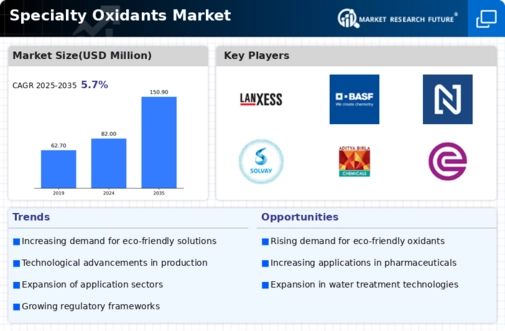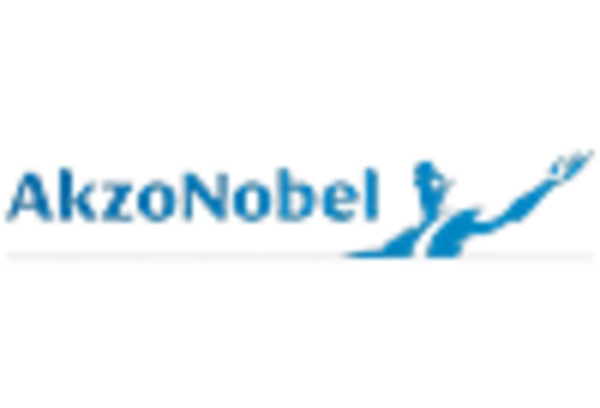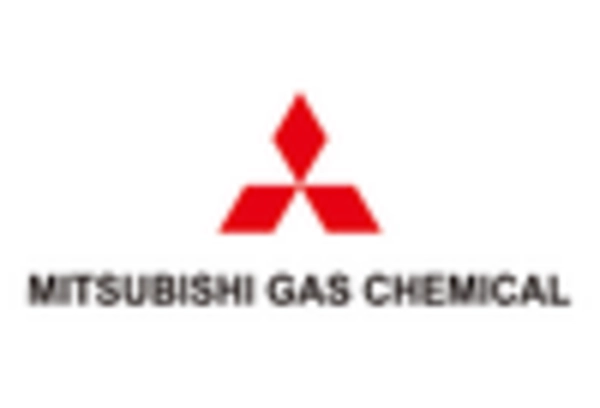Market Analysis
In-depth Analysis of Specialty Oxidants Market Industry Landscape
Technological advancements drive innovations in manufacturing processes, formulations, applications which help shape the dynamics of the Specialty Oxidants market. To keep up with technological trends manufacturers invest in research and development to offer high quality specialty oxidants that cater for specific industries’ needs.
The specialty oxidant market depends largely upon global supply and demand dynamics. Both changes brought on by economic conditions within a country or internationally are significant determinates of chemical use among various sectors of an economy: during downturns production reduces leading to decreased demand for specialty chemicals; during boom times consumption increases across multiple uses thereby raising demand for such products. It means that overall wellbeing of the world economies affects decisions about investing in this sector, output levels produced along with pricing policies adopted.
Increasingly environmental factors are shaping the Specialty Oxidants market’s dynamics. As sustainability gains significance globally, there is need for oxidizers that have reduced environmental burden imposed by them. There has been pressure on manufacturers to adopt green practices when producing goods like speciality chemicals with cleaner environmental profiles to be used in eco-friendly industries.
Speciality Oxidants market is highly competitive because they are critical to different applications. Manufacturers have to focus on product quality, cost-effectiveness and innovation in order to stand out from the herd. Differentiation strategies such as specialist specialty oxidant formulations for particular applications and/or superior performance characteristics are important when it comes to gaining market share. Companies that conduct continuous research and development keep themselves ahead of competition by meeting their customer’s changing preference.
The overall market dynamics of Specialty Oxidants are influenced by trade policies as well as geopolitical factors. Chemical manufacturing and distribution is global thus tariffs, import/export rules, political hostilities can affect the availability of specialty oxidants and their costing structures within various jurisdictions.
Also regulations and standards shape considerably the Specialty Oxidants market. Compliance with safety standards, quality regulations, environmental requirements etc is crucial to maintain a place in the market for any brand producing this kind of goods. To ensure the viability of their products in the market companies should proactively address regulatory concerns and maintain good standing with its customers or regulators
Furthermore, according to trends, consumer preferences and market dynamics also shape the Specialty Oxidants market. The shift in consumer tastes caused by factors such as need for effective water treatment methods, advanced pharmaceutical formulations and high-tech electronic applications may determine which specialty oxidant to use. Manufacturers should be aware of these shifts to produce items that meet new customers’ expectations and match evolving market conditions.

















Leave a Comment